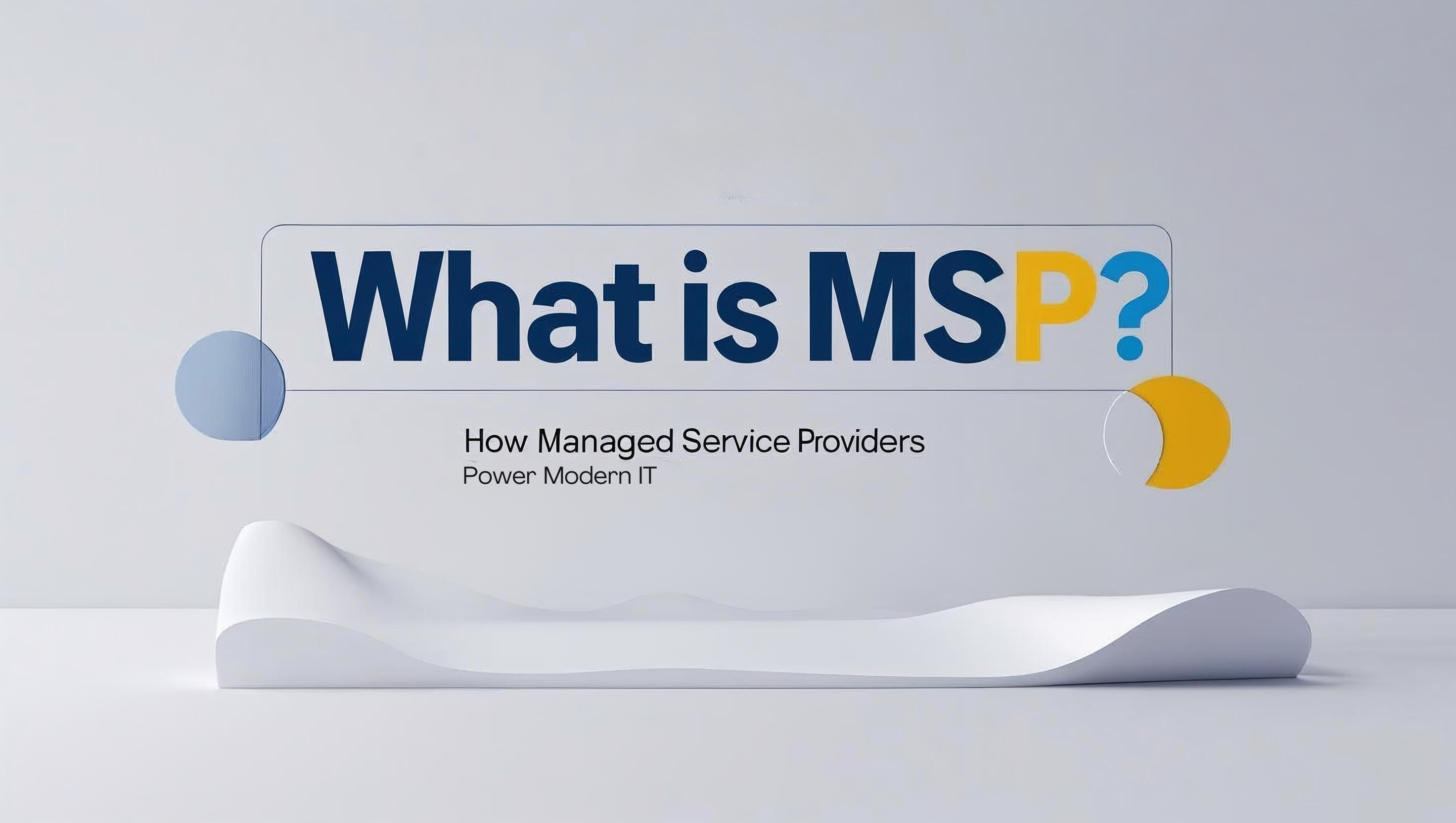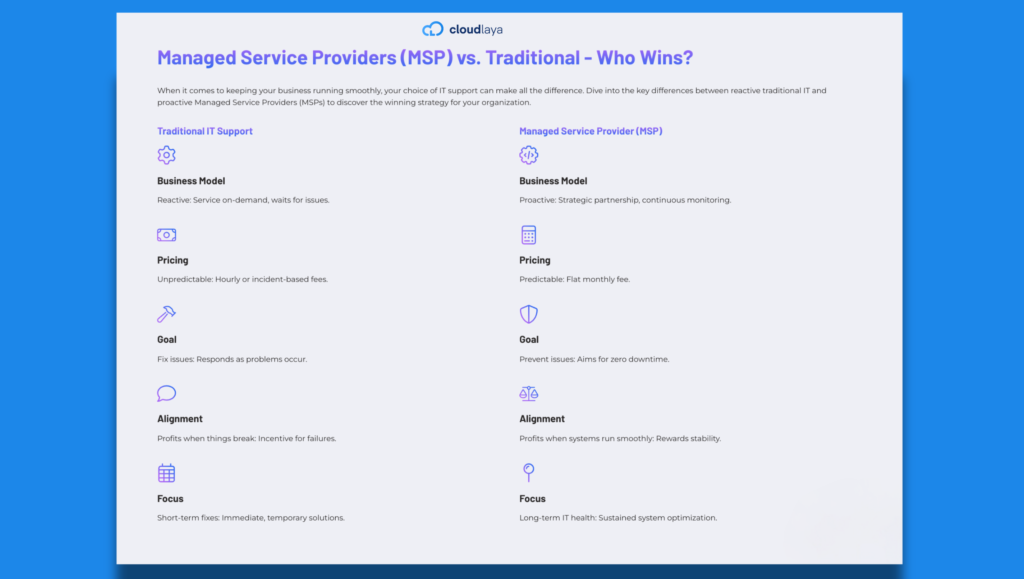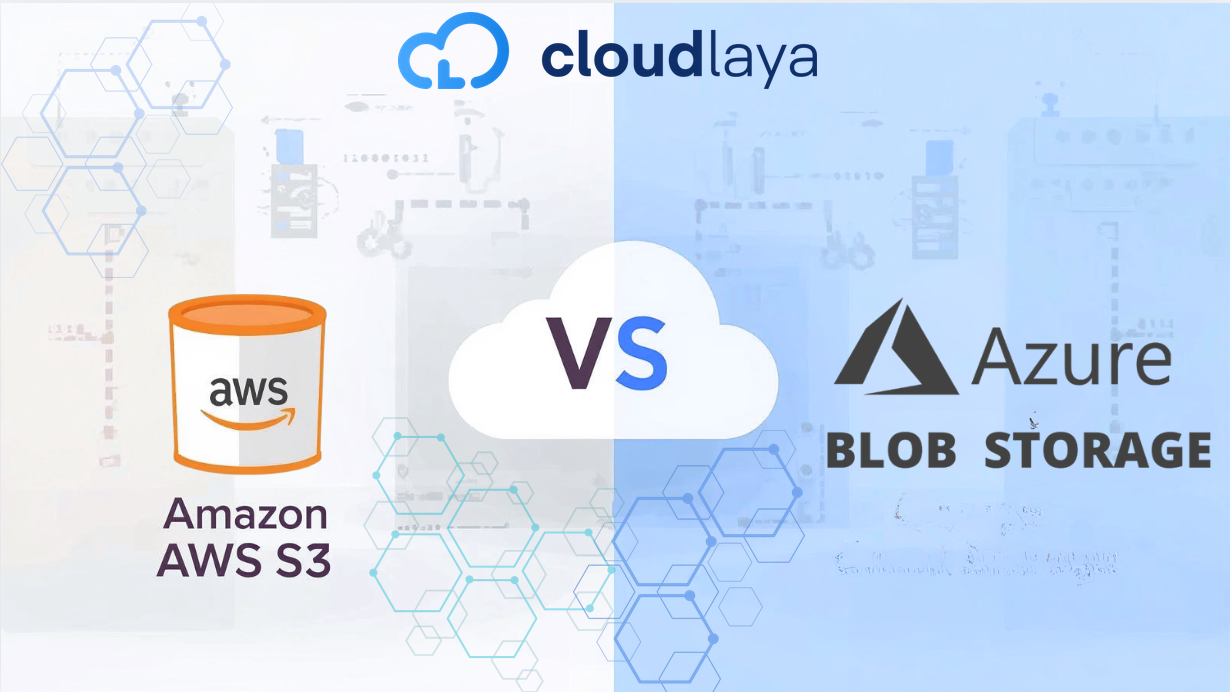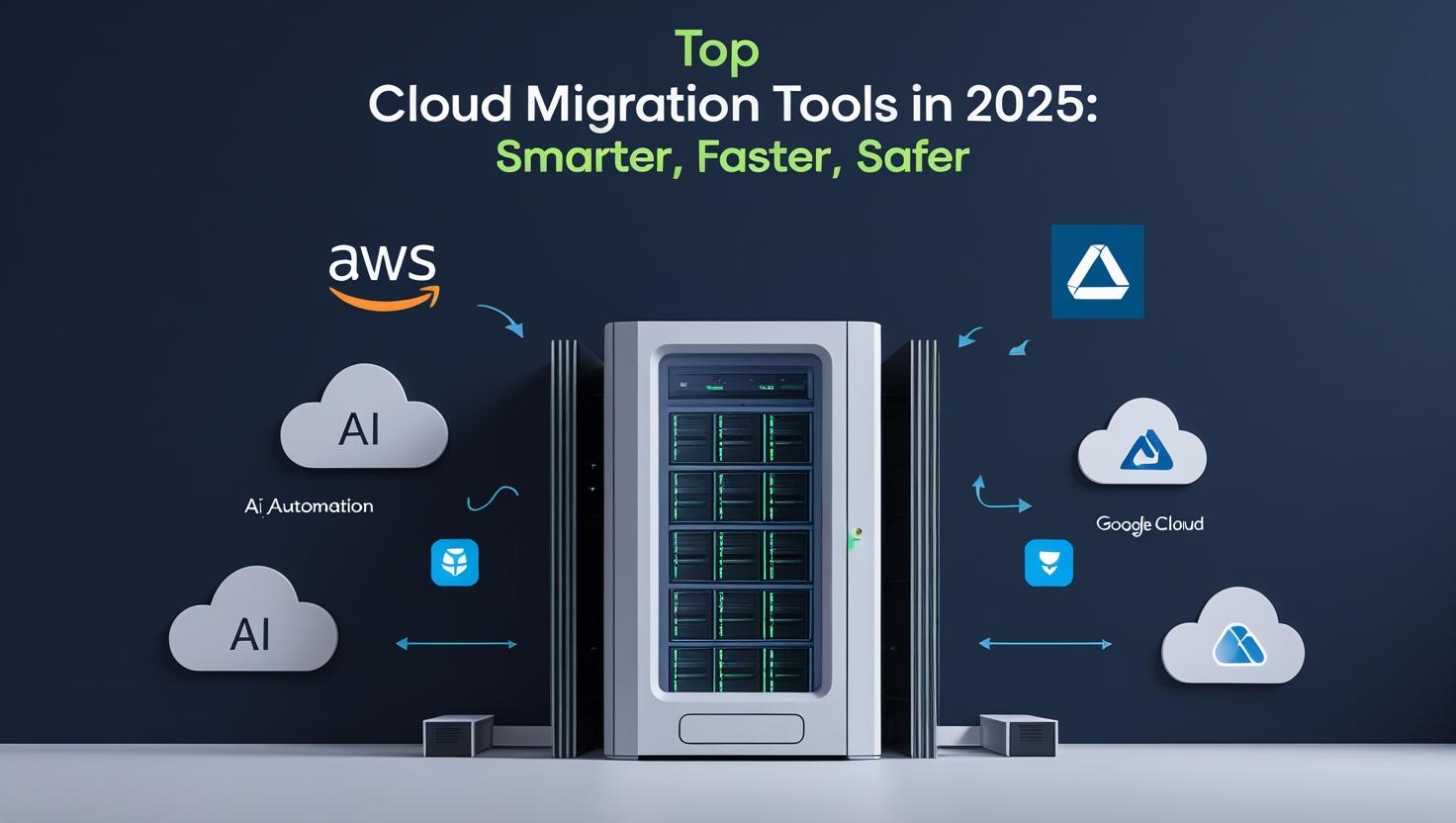
What Is an MSP? A Complete Guide to Managed Service Providers
Let’s be real—technology kind of rules our lives these days. It’s powering businesses big and small, but, man, trying to keep up with all the moving parts? That’s a whole job in itself (and frankly, sometimes it feels like a never-ending game of Whac-A-Mole). Whether it’s worrying about cyber creeps, surprise server crashes, or just the sheer cost of hiring a tech wizard, the struggle is real.
So, where does that leave you? Probably asking the same thing as everyone else: How do you make technology work for you without it draining your time, money, and sanity? That’s where the concept of a Managed Service Provider comes in—and if you’ve ever found yourself Googling “what is an msp,” you’re definitely not alone.
Basically, an MSP is like having your own behind-the-scenes IT squad. They watch over your systems, fix things before they break, and handle the tech headaches you’d rather avoid. Forget the old-school routine of calling for help only when something’s already broken (seriously, who has time for that panic?). MSPs focus on keeping everything running smoothly, so you can stay focused on growing your business instead of playing IT firefighter.
Curious about what an MSP actually does, the kinds of services they offer, and how to choose the right one? Stick around. We’re diving into the world of managed services—breaking down what is an msp, why businesses are loving them, and how picking the right partner can honestly change the way you work.
What Are The Key Benefits of MSP Engagement?
1. Predictable Costs:
Fixed monthly fees make budgeting for IT straightforward, avoiding surprise expenses associated with break/fix support.
2. Expertise on Demand:
Access to a team of IT professionals with up-to-date technical skills and certifications.
3. Enterprise-Grade Tools
Utilization of advanced monitoring, security, and management platforms typically out of reach for smaller organizations.
4. Focus on Core Business
Internal staff can focus on strategic objectives, while the MSP handles routine IT operations and troubleshooting.
Common MSP Service Offerings
1. 24/7 Network Monitoring
Continuous surveillance of network health to detect and address issues before they cause downtime.
2. Cybersecurity
Implementation of threat detection, firewall management, anti-malware solutions, and security best practices.
3. Data Backup & Disaster Recovery
Regular backups and tested recovery protocols to ensure business continuity in the event of data loss.
4. Help Desk Support
Responsive assistance for end-user issues, password resets, software troubleshooting, and device management.
MSPs vs. Traditional IT Support
Traditional IT support is basically a waiting game. Stuff breaks, you freak out, call for help, and then brace yourself for whatever bill lands in your inbox. It’s unpredictable, stressful, and honestly, kinda outdated. No one likes surprise expenses, right?
Now, here’s where MSPs come in and totally flip the script. An MSP—aka Managed Service Provider—isn’t just twiddling their thumbs until disaster strikes. Nope. They’re on your team 24/7, keeping an eye on your tech, patching things up before anything goes haywire. That means way fewer panicked phone calls and a whole lot more peace of mind.
The best part? You know exactly what you’re paying every month. MSPs work on a fixed monthly fee, so you can actually plan your budget, not just cross your fingers and hope nothing explodes. And get this: while traditional IT folks kinda profit when things go south, an MSP actually wins when everything’s running smoothly. Their success is tied to your tech staying healthy, which lines up perfectly with your long-term goals.
In short, if you’re tired of the break-fix chaos and want someone in your corner making sure your computers don’t melt down at the worst possible moment, that’s what an MSP is all about.
The Picture below helps you to understand the difference between MSP vs Traditional Service Providers.

Selecting the Right MSP
1. Alignment
Choose an MSP with a service model and culture that match your organization’s goals.
2. Capabilities
Evaluate technical expertise, certifications, and tool-sets.
3. Scalability
Ensure the MSP can adapt to your business’s growth and changing requirements.
4. Transparency
Look for clear reporting, communication, and contractual terms. By leveraging an MSP, businesses can ensure robust, secure, and scalable IT operations—enabling greater focus on core business objectives and reduced operational risk.
This proactive philosophy is the definitive answer to the question, “what is an msp provider?” It’s a partner dedicated to your long-term technological health, not just a temporary fix.
What Does an MSP Do? Core Services and Offerings
Now that we’ve nailed down the answer to what is an msp, let’s get into the juicy details of what these folks actually do for your business. Think of an MSP as your all-in-one IT sidekick—ready to jump in, handle the chaos, and keep things running smooth while you focus on, well, literally anything else.
1. Proactive IT Infrastructure Management
This is where the magic starts. MSPs don’t just sit around waiting for your tech to break—nope, they’re actively on guard, using high-tech tools (yep, we’re talking about RMM software) to keep an eye on your systems 24/7. What does that mean for you? They’re constantly:
- Monitoring the health of all your devices—servers, computers, you name it.
- Automating those maintenance tasks everyone hates, like cleaning out junk files and defragging hard drives.
- Rolling out security patches and updates before hackers even get a whiff of your network.
Bottom line: they’re catching issues before you even know there’s a problem. Your employees stay happy, and you avoid those “not again!” IT moments.
2. Managed Security, Detection, and Response
Let’s face it, cyber threats are everywhere. It’s wild out there. MSPs bring real muscle to your defenses by layering on protections that actually work. Here’s what you can expect:
- Top-tier firewalls and antivirus software, set up and managed by people who know what they’re doing.
- Continuous monitoring for sketchy activity, so suspicious stuff gets shut down, fast.
- Email security—because phishing emails are relentless and someone always clicks.
- Regular vulnerability scans to spot and fix weak spots before the bad guys find them.
And if security is your top concern, some MSPs are even full-on Managed Security Service Providers (MSSPs). Translation: they’ve got teams watching your back around the clock, ready to jump in if anything goes sideways.
3. Data Backup and Disaster Recovery
Here’s a nightmare: losing all your business data in a blink. MSPs are here to make sure that never happens. They’ll set up solid backup and disaster recovery plans, which means:
- Your important data gets backed up automatically, usually to a secure cloud spot you don’t have to think about.
- They actually test those backups (no more crossed fingers), so you know you can get your stuff back if disaster strikes.
- You get a clear plan for getting your business back online, fast, with as little downtime as possible.
- It’s more than just copying files—it’s your safety net if things ever go wrong.
4. Cloud Services Management
Moving to the cloud? Welcome to modern business. But it’s not always a walk in the park. This is where an MSP really shines. They’ll:
- Help you migrate your data and apps to platforms like Microsoft 365, Google Workspace, or AWS, without the usual headaches.
- Take over the day-to-day management and security of your cloud setup, so you don’t have to babysit it.
- Keep an eye on your cloud spending and make sure you’re not wasting money on stuff you don’t need.
So, if you’ve been asking yourself what is an msp and whether you need one—well, if you want less stress, fewer tech fires, and more time to actually run your business, the answer’s probably yes.
Picking the Right MSP ( Managed Service Provider) : No Pressure, Just Your Entire Business at Stake
Alright, so now that you’ve wrapped your head around what is an msp and why they matter, it’s time for the real challenge—finding one that actually fits your business. Trust me, not all managed service providers are created equal. Some are lifesavers, some… well, let’s just say you want to do your homework. Here’s a quick, no-fluff guide to help you sort the gems from the duds:
1. Figure Out What You Actually Need
Before you even start Googling, take a step back. What are your biggest tech headaches? Where do you want your business to go in the next few years? Get specific. Knowing exactly what you need makes it way easier to spot an MSP that lines up with your goals.
2. Check Their Street Cred
Don’t just take their word for it. Ask for real proof—case studies, client testimonials, and those all-important certifications (think CompTIA, Microsoft, Cisco). If they’ve helped businesses like yours before, you’re off to a good start.
3. Don’t Get Burned by a Shady SLA
The Service Level Agreement (SLA) is basically your safety net. It should spell out things like response times, problem resolution, and system uptime. If it’s vague or full of loopholes? Big red flag.
4. Drill Down on Security
MSPs are literally the gatekeepers to your business data. So, ask them about their own security practices. If they can’t give you straight answers, you might want to keep looking.
5. Get Real About Pricing
Nobody likes surprise fees. Make sure you know how they charge (per user, per device, or packages) and what’s included. Transparency is key—hidden costs are a deal-breaker.
6. Talk to Actual Clients
Want the real scoop? Chat with their current customers. Ask about their experience, how quickly issues get resolved, and if they’d recommend the MSP. Nothing beats honest feedback.
Managed Services: Where It’s Headed (And Why You Should Care)
The world of managed services is anything but boring. Just like tech, the whole “what is an msp” conversation keeps evolving. Here’s what’s shaking up the industry right now:
1. Co-Managed IT is Booming
If you’ve already got an in-house IT team, great! But even the best teams need backup. More companies are teaming up with MSPs so their own staff can focus on bigger projects while the MSP handles the heavy lifting, like 24/7 security or tricky server stuff.
2. MSPs Are Getting Super-Niche
The days of one-size-fits-all are gone. The best MSPs now specialize in industries—healthcare, law, manufacturing, you name it. They know your rules, your software, and your headaches.
3. AI & Automation Are Taking Over
Modern MSPs use artificial intelligence to spot issues before you even notice them—from looming hardware failures to sneaky cyber threats. It’s all about staying one step ahead.
4. Cybersecurity Is King
At the end of the day, protecting your business from cyberattacks is job #1. If an MSP isn’t laser-focused on security, that’s your cue to move on.
Why Cloudlaya? Here’s the Real Talk.
So, after learning what is an msp and why it matters, you might be wondering where to actually find a partner who gets it. That’s where Cloudlaya comes in. We don’t believe in cookie-cutter solutions. We kick things off by listening to your story, understanding your pain points, and getting clear on your goals.
Our approach? Proactive, security-first, and totally personalized. Our US-based crew of certified pros becomes an extension of your team. We’re here to make your tech work for you, not against you.
Every business deserves strong IT support, no matter the size. With Cloudlaya, you get a partner who’s genuinely invested in your growth and security—not just another vendor.
Ready to transform your IT? [Schedule a Free Consultation] and let’s chat about what you need.
Want to see us in action? [Explore Our Managed IT Services] and discover how we can help you thrive.
Final Thoughts
So, what is an MSP? In the simplest terms, it’s your outsourced IT team—your go-to crew for all things tech. But if you really take a closer look, it’s way more than that. Think of an MSP as your business’s tech partner in crime.
They’re not just fixing stuff when it breaks; they’re in your corner, making sure things run smoothly, locking down your security, and using their know-how to help your business grow.
Let’s be real: in today’s fast-paced world, you just can’t afford to let technology fall to the bottom of your to-do list. Sticking with that old-school, break-and-fix approach? Yeah, that’s a recipe for headaches and missed opportunities. Shifting to a managed services model isn’t just about staying online—it’s a smart move to give your business an edge.
At the end of the day, understanding what is an MSP is the first step if you want to unlock your company’s full potential. Get this right, and you’re not just solving tech issues—you’re setting yourself up for real, lasting success.
FAQs
How Long Does Cloud Migration Take? Timeline, Steps & Guide
The Ultimate Guide to Cloud Cost Optimization in 2025 : A Practical AWS vs. Azure vs. GCP Comparison
What is Kubernetes Used For? A Comprehensive Guide for Beginners



One thought on “What Is an MSP? A Complete Guide to Managed Service Providers”